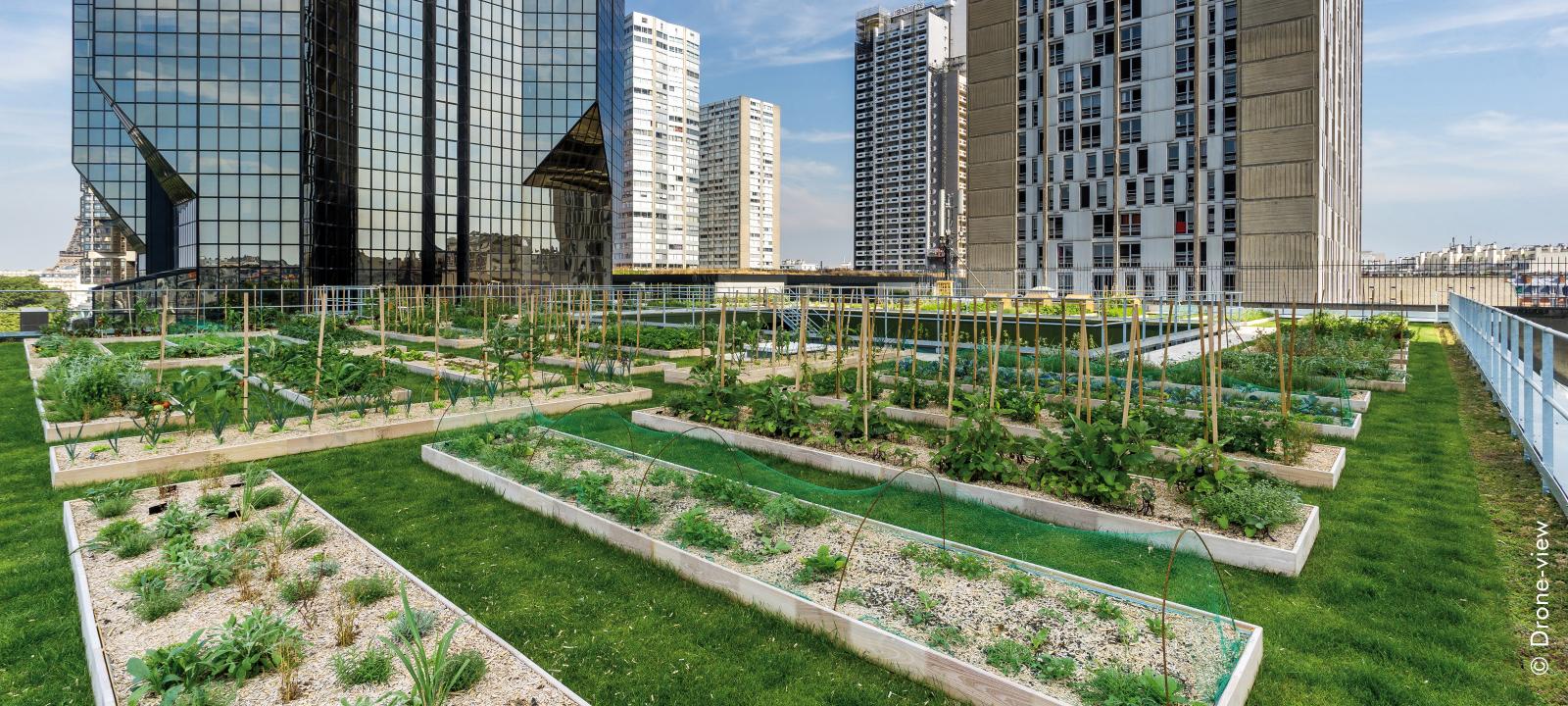Urban Rooftop Farming Growing Food In Vertical Spaces

Urban rooftop farming is a key solution to the challenges faced by farmers in today's world. With limited land availability and increasing urbanization, traditional farming methods are becoming less efficient and sustainable. However, by utilizing rooftops in urban areas, we can create a new way of farming that is not only environmentally friendly but also economically viable.
Imagine a cityscape filled with lush greenery and abundant crops, all cultivated on the rooftops of buildings. This vision may seem futuristic, but it is already becoming a reality in many places around the world. Urban rooftop farming offers numerous benefits, from improved food security to reduced carbon footprint.
One of the main advantages of urban rooftop farming is that it maximizes the use of available space. In densely populated cities, finding suitable land for agriculture can be a major challenge. However, rooftops are often underutilized, making them the perfect location for cultivating crops. By utilizing this space, we can increase local food production and reduce the need for long-distance transportation of food.
Additionally, urban rooftop farming helps to mitigate the effects of climate change. Plants absorb carbon dioxide and release oxygen, acting as natural air purifiers. By cultivating crops on rooftops, we can create a healthier and cleaner environment for urban dwellers. Furthermore, green roofs help to regulate temperature, reducing the urban heat island effect that is common in densely built areas.
Another benefit of urban rooftop farming is its ability to promote biodiversity. Traditional farming methods often rely on monoculture, which can lead to a loss of biodiversity and an increased vulnerability to pests and diseases. In contrast, rooftop farms can support a wide range of plant and animal species, creating a more balanced and resilient ecosystem.
What is more, urban rooftop farming can have positive social impacts. It provides opportunities for community engagement and education. Rooftop farms can serve as platforms for workshops and educational programs, teaching people about sustainable farming practices and the importance of local food production. Furthermore, they can act as gathering spaces, fostering a sense of community and belonging.
Ideas for urban rooftop farming are abundant. From traditional agriculture to hydroponics and aeroponics, there are various methods that can be adapted to the rooftop environment. Traditional agriculture involves soil-based farming, where plants are grown directly in the ground or in containers filled with soil. This method is suitable for crops that have deep root systems and require more space.
On the other hand, hydroponics and aeroponics are soilless cultivation methods that can be highly efficient in urban rooftop farming. In hydroponics, plants are grown in nutrient-rich water solutions, while in aeroponics, plants are grown in an air or mist environment. Both methods allow for precise control of nutrients, water, and light, resulting in faster growth and higher yields.
Recommendations for successful urban rooftop farming include careful planning and design. Before starting a rooftop farm, it is essential to assess the structural capacity of the building and ensure that it can support the additional weight of the crops, soil, and irrigation systems. Furthermore, it is important to consider factors such as sunlight exposure, wind patterns, and access to water.
When it comes to selecting crops for urban rooftop farming, it is advisable to choose varieties that are well-suited to the local climate and have high yields. Leafy greens, herbs, and microgreens are excellent choices for urban farming, as they can be easily grown in containers and have a short growing cycle. Additionally, crops that are in high demand in the local market can help maximize profitability.
Listicle of benefits of urban rooftop farming:
- Increased food security
- Reduced carbon footprint
- Maximized use of space
- Improved air quality
- Regulated temperature
- Promotion of biodiversity
- Community engagement and education
- Diverse farming methods
- Increased crop yields
- Positive social impacts
Question & Answer:
Q: How can urban rooftop farming contribute to food security?
A: Urban rooftop farming increases local food production, reducing the dependency on long-distance transportation of food. It ensures a more resilient and secure food supply for urban areas.
Q: Can rooftop farms be profitable?
A: Yes, rooftop farms have the potential to be profitable. By growing high-value crops and selling them directly to local markets or restaurants, farmers can generate a steady income and create a sustainable business model.
Q: Are there any limitations to rooftop farming?
A: Rooftop farming does have some limitations, such as the need for proper structural support, access to water, and sunlight exposure. However, with careful planning and design, these limitations can be overcome.
Summary of urban rooftop farming:
Urban rooftop farming is a sustainable and efficient solution to the challenges faced by farmers in urban areas. By utilizing the underutilized space on rooftops, we can maximize local food production, reduce carbon emissions, and create a healthier environment. With careful planning, the use of diverse farming methods, and community engagement, rooftop farming has the potential to transform our cities and promote a more sustainable future.
In conclusion, urban rooftop farming offers a promising way forward for farmers in urban areas. The benefits are numerous, from increased food security to improved air quality and reduced carbon footprint. With the right approach and proper planning, rooftop farming can play a significant role in building sustainable and resilient cities. Let us embrace this innovative farming method and work towards a future where every rooftop is a thriving garden.




Post a Comment for "Urban Rooftop Farming Growing Food In Vertical Spaces"